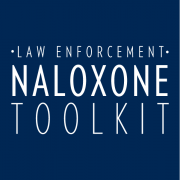Below are several sample resource documents related to liability.
 The risk of liability for a law enforcement officer or their employer resulting from naloxone administration is low. From a legal standpoint, it would be extremely difficult to win a lawsuit against an officer who administers naloxone in good faith and in the course of employment. Overdose response activity is no different from any other good faith effort to provide assistance in an emergency.
The risk of liability for a law enforcement officer or their employer resulting from naloxone administration is low. From a legal standpoint, it would be extremely difficult to win a lawsuit against an officer who administers naloxone in good faith and in the course of employment. Overdose response activity is no different from any other good faith effort to provide assistance in an emergency.
In nearly all states, the liability risk is further reduced by laws that provide law enforcement officers, as well as their employers, with additional layers of protection from lawsuits.
Almost half the states in the United States have passed naloxone access laws that shield “any person” from civil and criminal liability if they administer naloxone. Such immunity applies to law enforcement officers as well as other professional responders who administer naloxone in good faith.
Many states also have provisions, commonly referred to as “Tort Claims Acts,” which extend additional liability shields to both state and local governments. Although these rules vary, such laws generally cover discretionary actions made in good faith and are within the scope of an officer’s employment. Related provisions may also cap the maximum liability of the governmental entity and prohibit the payment of punitive or other damages.
In summary, as long as law enforcement officers act in good faith and within the scope of their training and standard operating procedures, the risk of liability to themselves or their employer is extremely low.
Providing first aid to an opioid overdose victim carries the same general occupational risk inherent to other first aid activities that are part of policing. Universal precautions should be taken when coming into direct contact with the overdose victim, including moving them into the recovery position, providing rescue breathing, and any other manipulation. Given that a substantial proportion of opioid overdose victims are people who inject drugs, law enforcement officers should be aware of the high likelihood that hypodermic needles may be present on the victim’s person and elsewhere on the scene.
Injection of intramuscular (IM) naloxone carries a remote risk of an accidental needle stick injury (NSI). If the officer experiences an NSI after administering the drug, there is a risk of contracting a blood borne infection, such as Hepatitis C or HIV. Aftermarket atomizers enable intranasal administration of naloxone without using a needle. Most law enforcement agencies have determined that the added expense of purchasing atomizers is worth the occupational safety gains from not having to use needles to administer the drug. The retractable needle system of the EVZIO® naloxone auto-injector is designed to prevent needle stick injury.
Overdose victims rescued by naloxone may experience opioid withdrawal symptoms. In very rare instances when such symptoms are severe, the victim may become combative. This is reported in about one percent of all rescues. There are no reported cases of injuries to law enforcement officers or the victim in the context of law enforcement overdose response programs.
Generally, no. In most states, a legal concept called the Public Duty Doctrine blocks such lawsuits. This means that officers have no legal duty to assist others, even when they are in a position to do so. These protections do not apply to any administrative discipline for violating standard operating procedures.